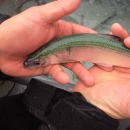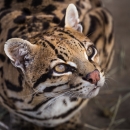States
New York, PennsylvaniaEcosystem
LakeThe cisco (Coregonus artedi) and the bloater (Coregonus hoyi) both played critical roles in the trophic dynamics of the Great Lakes. They were the primary native prey species for top predator fish such as the lake trout. By the 1950’s, however, overfishing and competition with non-native, plankton-eating prey fish (alewife) caused the collapse of these native prey species, and subsequently contributed to the collapse of the lake trout fishery. Re-establishing sustainable populations of cisco and bloater in Lake Ontario, through propagation and stocking is the focus of a cooperative, international effort between the New York State Department of Environmental Conservation, Ontario Ministry of Natural Resources and Forestry, the U.S. Fish and Wildlife Service's Northeast Fishery Center, Lower Great Lakes Fish and Wildlife Conservation Office, and the Allegheny National Fish Hatchery, the U.S. Geological Survey- Tunison Lab in New York, and the Great Lakes Fishery Commission. Since 2017, we have stocked out 555,000 cisco in Lake Ontario. Our efforts are now focused on restoring bloater in Lake Ontario. We are developing rearing capacity at the Northeast Fishery Center and at the Allegheny National Fish Hatchery to achieve annual stocking goal of 500,000 fingerling and yearling bloaters for Lake Ontario. We also are working to improve breeding and culture protocols, which we will share with our partners across the Great Lakes to help them restore bloater in other Lakes. Our collective efforts not only benefit lake trout but anglers will win too.








